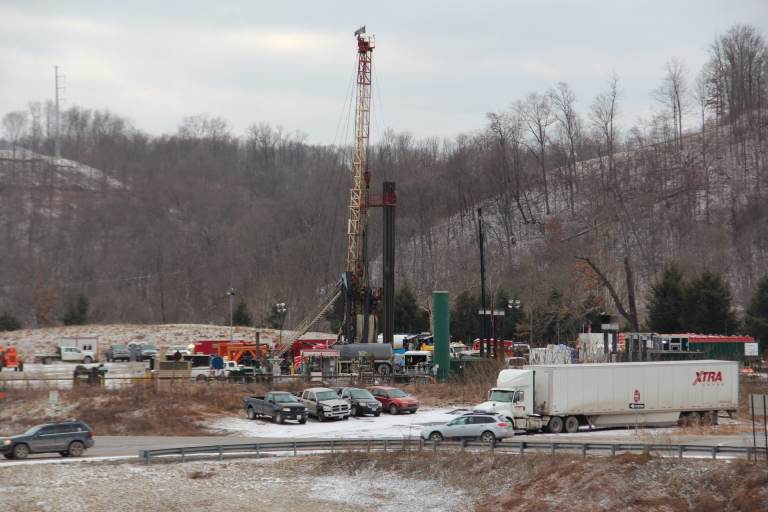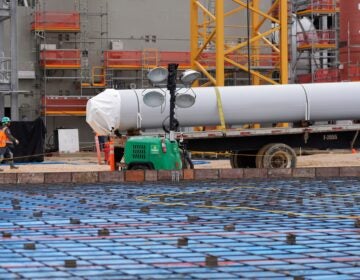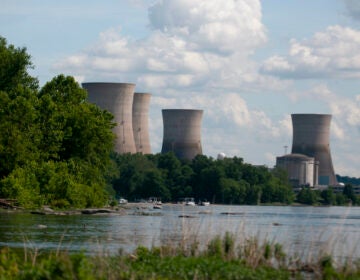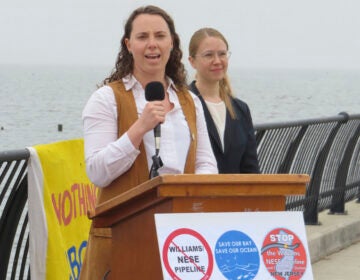DEP report: Pennsylvania extracted more natural gas than ever during pandemic
Drillers in Pennsylvania produced the highest volume of natural gas on record for a single year in 2020, despite the economic downturn fueled by the COVID-19 pandemic.

A Marcellus shale gas well in Washington County, Pa. (Reid R. Frazier / StateImpact Pennsylvania)
This story originally appeared on StateImpact Pennsylvania.
Drillers in Pennsylvania produced the highest volume of natural gas on record for a single year in 2020, despite the economic downturn fueled by the COVID-19 pandemic.
That’s according to the state Department of Environmental Protection’s latest annual report on the oil and gas industry.
Unconventional wells produced 7.1 trillion cubic feet of gas last year, even as national and regional natural gas prices dipped in response to the pandemic.
An unconventional well targets oil and gas trapped in a rock formation, like Pennsylvania’s Marcellus Shale, that doesn’t allow the fluids to move around easily. It typically includes a section drilled horizontally — unlike a conventional well, which is drilled straight down — and relies on hydraulic fracturing to free the oil and gas.
Of the 527 new wells drilled in Pennsylvania last year, 476 were unconventional. The total number of new wells is down from 787 in 2019.
In May, Pennsylvania Attorney General Josh Shapiro and Democrats in the state Senate promoted a package of bills that aims to increase oversight of the fracking industry. The push for transparency comes after a grand jury concluded last year that Pennsylvania’s regulations and enforcement were insufficient to guard against the health and environmental impacts of fracking.
The DEP said it conducted almost 26,000 inspections last year and found 9,363 violations.
According to the DEP, regulators found 3,967 violations after conducting 10,430 inspections of conventional wells. For unconventional wells, regulators reported 1,096 violations following 11,782 inspections. The DEP did not categorize the remaining violations as related to either conventional or unconventional drilling.
The DEP said most violations at conventional wells were administrative, while most at unconventional wells had to do with environmental health and safety.
An industry group said drillers have adhered to safety standards.
“Through continuous operational performance improvements, technological innovations and a commitment to environmental stewardship, Pennsylvania’s natural gas producers lead from the front,” Marcellus Shale Coalition president David Callahan said in a statement.
Given its long history of oil and natural gas extraction, Pennsylvania is also home to thousands of abandoned wells.
In its report, the DEP said it has identified a little over 12,000 abandoned wells, fewer than one-third of which are plugged. Unplugged abandoned wells can leak oil and brine into the water and soil, and they can release methane — a greenhouse gas with more than 80 times the warming power of carbon dioxide over a 20-year period.
“Finding solutions to plug these wells will make the commonwealth a healthier place for our current and future residents,” DEP Secretary Patrick McDonnell said in a statement.
Plugging abandoned wells is expensive. The DEP said it doesn’t have nearly enough money to plug the 200,000 abandoned wells that the department estimates remain unaccounted for.
Federal funding could be on the horizon: the bipartisan infrastructure deal President Biden announced last week includes $21 billion for well-plugging and other cleanup projects. Regulators in Pennsylvania believe that federal support could provide a much-needed boost to the state’s efforts, CBS News reports.
Bills aimed at plugging abandoned wells have also recently been introduced in the U.S. House of Representatives and the Senate.

Get daily updates from WHYY News!
WHYY is your source for fact-based, in-depth journalism and information. As a nonprofit organization, we rely on financial support from readers like you. Please give today.





